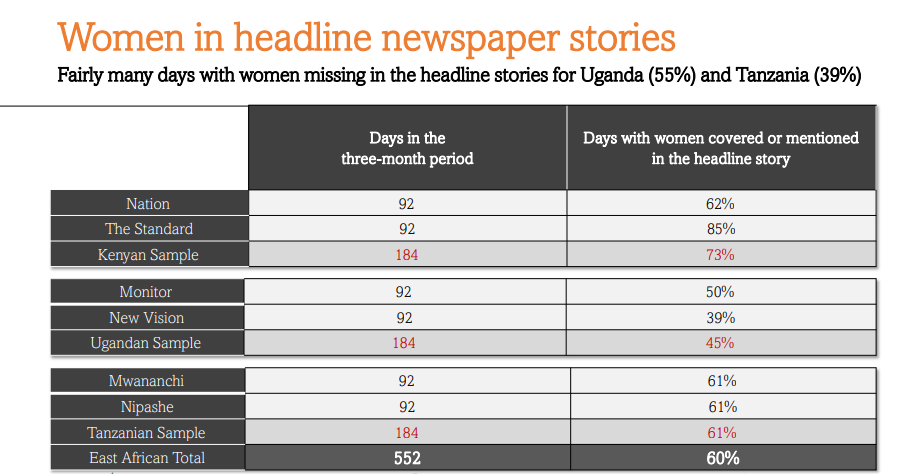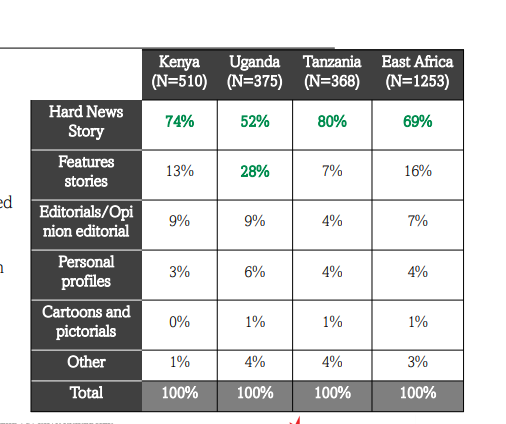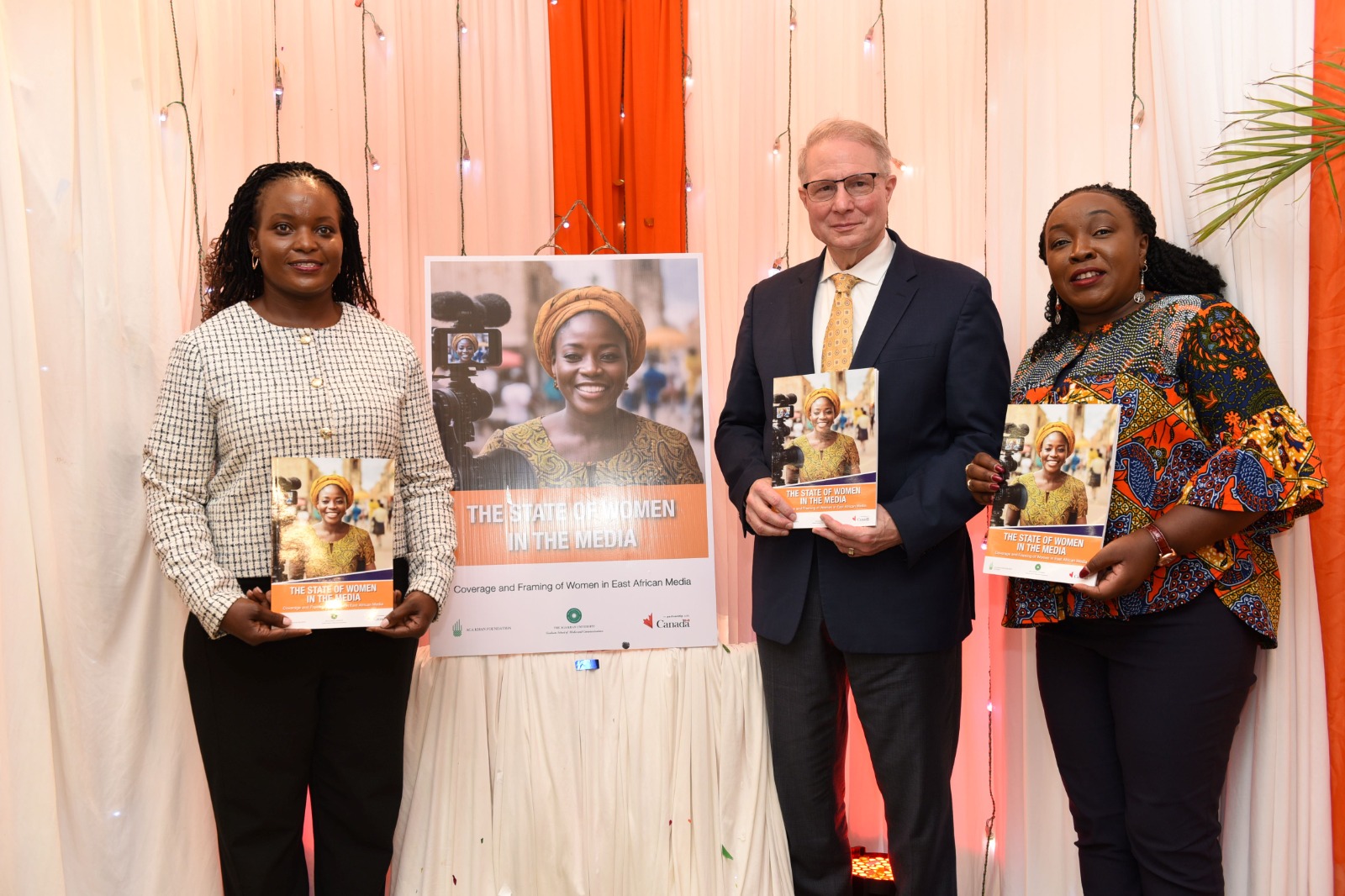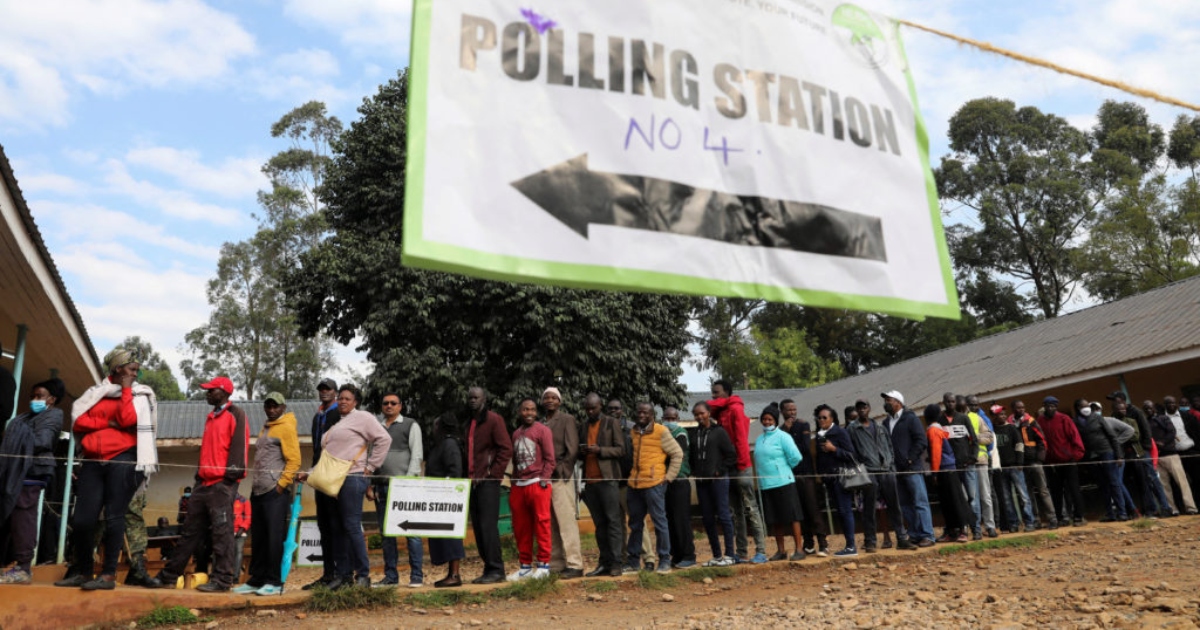A new study by Aga Khan University has revealed that Kenyan women predominantly miss the headline stories of most newspapers in East Africa.
In the report released on Friday, March 1, Kenyan women are neither mentioned nor covered in most of the headline stories with 23 % of the sampled days having no mention or coverage of women in Kenyan newspapers.
The situation is alarming in Uganda and Tanzania with days of women missing in the headline stories being at 55% and 39% respectively.

According to the report, most of the stories featuring women in the newspapers are written by male journalists in Kenya at 17 %and Uganda at 24%.
Read More
In Tanzania, the stories covering women written by female journalists in the newspapers were at 52 %.
The report also disclosed that most of the newspaper stories featuring women are hard news stories with Tanzania (80%) having the highest percentage followed by Uganda with 28% and Kenya with 13 %. The trend is the same for TV across the three countries.
“The findings reveal troubling disparities while women constitute a significant portion of the media workforce, they are disproportionately under-represented in key areas, particularly in the creation and dissemination of news stories. Even more concerning is the fact that a significant majority of the stories covering women are authored by male journalists highlighting a critical imbalance in perspectives and narratives,” noted Prof. Nancy Booker, Dean at the Graduate School of Media and Communications (GSMC).

However, the framing of women and their expertise in news stories that featured women in newspapers, TV, and digital in East Africa was generally positive.
Most newspaper stories pronounced salient aspects of women that are progressive within the context of gender equity. Uganda had more stories with positive framing of women compared to Kenya and Tanzania.
The study revealed that 24 % of the news stories in TV framed women as succeeding in what they do. Further 12% framed Women as heroines of success stories and 11% framed women as breaking the glass ceiling in a fashion that normalizes women's success.
Digital also has the same trend of more stories framing women in a progressive positive light.
The report also noted that Kenya has more women covered in national events (77%) while Tanzania has relatively more women covered in private organization events and comparably high numbers of women covered in women organizations (18%) and business entrepreneurship or economic events (17%). In Uganda, women are covered on a diverse array of platforms or events (59%)
Gender representation in the newsroom workforce in East African News Media Organization showed an improvement in the number of women covering beats like politics (47%), business and economics (38), topics of the day (41%), and writing opinion editorials compared to findings in previous studies.

President William Ruto’s advisor on Women's Rights Harriette Chiggai who was the chief guest during the launch promised to ensure women are represented well across all sectors including in the media industry.
“For far too long, women have been left out in data which is used to create policies and programs. My office is keen on making sure that we ensure women are represented in politics, economy, data, engineering, and media. I therefore commend this report which is playing an instrumental role in providing that data, especially on both traditional and digital media,” said Chiggai.
The research covered 1256 newspaper articles, 169 TV news stories, and 47 digital platform stories.


-1680703413.jpeg)
-1715500363.jpeg)


